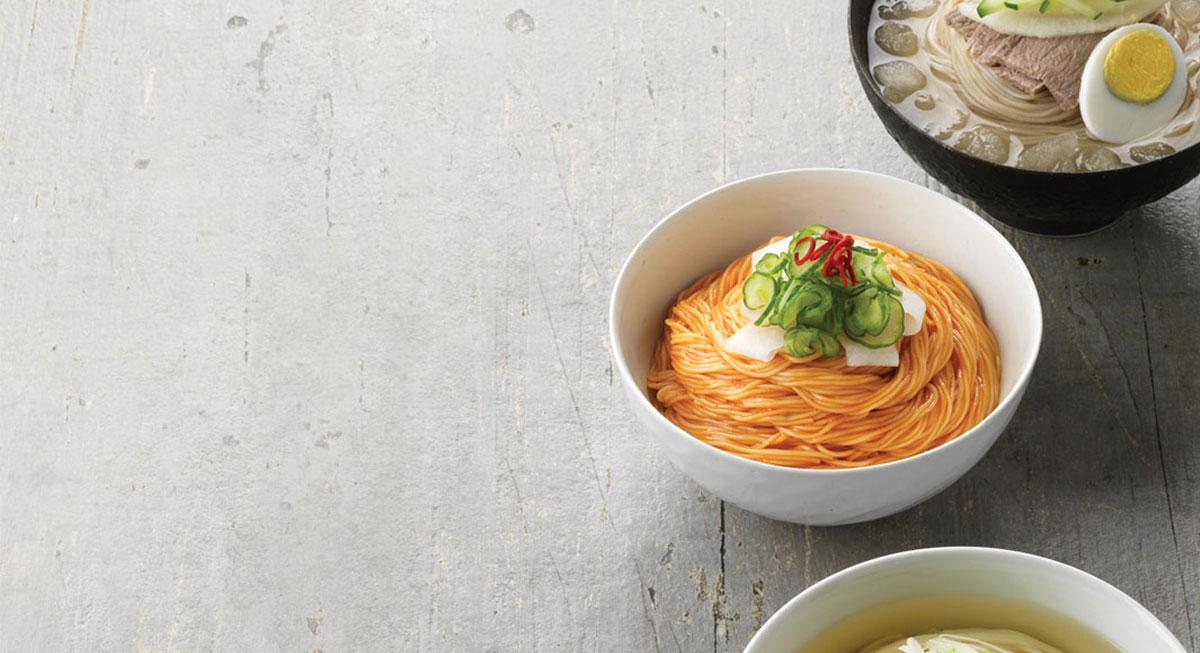Today, noodles are often enjoyed as a quick meal, but in the past, noodles were served on special occasions. As farmers mostly grew only rice, wheat was scarce, therefore noodles, which are made of wheat flour, were a specialty. Long noodles symbolized a long and happy life, therefore noodle dishes were served on special occasions such as birthdays, weddings and 60th birthdays (Koreans have special celebrations for 60th birthday) to make the occasion more festive.
A GREAT VARIETY OF NOODLE DISHES
A wide range of ingredients and cooking methods are used in making Korean noodles. As flour was scarce, other ingredients like buckwheat, kudzu, corn, potatoes, sweet potatoes, mung beans and beans were grounded into powder and mixed with flour. This brought some variation to the noodle dishes on the Korean table.
Popular noodle dishes include janchiguksu (banquet noodles), thin noodles served in an anchovy or shellfish based broth, and kalguksu, hand-rolled noodles served in a chicken or seafood based broth. Naengmyeon is also a popular noodle dish with two variations. There is the Pyeongyang-style naengmyeon, cold beef broth mixed with radish water kimchi and poured over buckwheat noodles, and there is the Hamheung-style naengmyeon, potato starch noodles mixed with spicy seasoning. People usually eat hot noodles on cold days and cold noodles on hot days. However, in accord with the traditional Korean saying “beat the heat with heat and the cold with cold,” Koreans often eat cold noodles in winter and hot noodles in summer.



![[A ZONE] Gangnam Food Spot](https://m.dgram.co.kr/wp-content/uploads/2020/09/A존-알래스카3-특성이미지_S-218x150.jpg)
![[A ZONE] Gangnam Life Style](https://m.dgram.co.kr/wp-content/uploads/2020/09/로우클래식1-특성이미지_S-218x150.jpg)








![[A ZONE] Gangnam Food Spot](https://m.dgram.co.kr/wp-content/uploads/2020/09/A존-알래스카3-특성이미지_S-324x160.jpg)
![[A ZONE] Gangnam Life Style](https://m.dgram.co.kr/wp-content/uploads/2020/09/로우클래식1-특성이미지_S-324x160.jpg)




